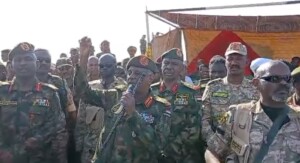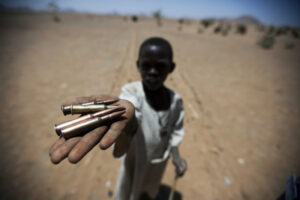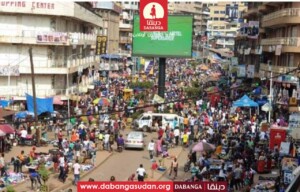At least 36 die in South Darfur clashes
At least 36 people were killed and dozens were left wounded after fighting broke out between Taisha and Fallata tribesmen near Um Dafug in South Darfur on Saturday.
 UNAMID launched a conference to address tribal conflicts in South Darfur in 2013 (Hamid Abdulsalam/UNAMID)
UNAMID launched a conference to address tribal conflicts in South Darfur in 2013 (Hamid Abdulsalam/UNAMID)
At least 36 people were killed and dozens were left wounded after fighting broke out between Taisha and Fallata tribesmen near Um Dafug in South Darfur on Saturday.
The Arab Taisha tribe and the non-Arab African Fallata tribe clashed in the Mandawa area near Um Dafug. The violence between the herding tribes lasted throughout Sunday but, according to the Sudanese News Agency (SUNA), calm was restored yesterday.
“We heard the sound of heavy weapons throughout the fighting”
A local resident told AFP news agency “we heard the sound of heavy weapons throughout the fighting”.
The Wali (governor) of South Darfur, Mousa Mahdi, said that the joint forces active in the area were able to separate the two parties and “prevent bloodshed and establish security” in the area.
The Wali also announced that the joint forces had recovered stolen cattle (61 head of cows) in El Tawil village from Jawa thieves from another state.
South Darfur violence
South Darfur has a history of tribal tensions* and violent attacks on farmers and villagers. In April, people from El Salam locality protested after an attack on their village. Earlier that month, one person was killed and five others were injured in an attack on Kalma camp.
In March, 11 people were killed in fighting between Fallata and Masalit tribes in Gireida, whilst government forces did nothing to intervene as neighbourhoods were torched.
Afterwards, people protested against the Rapid Support Forces** (RSF) presence in the state and the General Coordination of Camps for the Displaced and Refugees in South Darfur demanded the dismissal of South Darfur wali Mousa Mahdi. The displaced accused him of supplying tribal groups with weapons that are used to attack camps for the displaced, most notably Kalma camp.
Earlier this year, a conflict between Rizeigat and Fallata herders in South Darfur cost the lives of at least 70 people from both tribes.

*Darfur has a long history of strife between often Arab herding tribes and non-Arab African herders or sedentary farmers, which were exploited by the previous regime of dictator Omar Al Bashir who supported the Janjaweed militia that carried out many attacks on farmers. Al Bashir employed these militias, largely made up of Arab nomads, to repress a revolt over ethnic discrimination in the region, mainly targeting non-Arab African farmers. According to the UN, the conflict left at least 300,000 people dead and displaced more than 2.5 million.
** Officially, the RSF militia, set up by the ousted Al Bashir regime in 2013, was integrated into the Sudan Armed Forces in August 2019. At the same time, however, the militia stays a force unto itself. The RSF, which grew out of the Janjaweed who fought for the Sudanese government in Darfur, is widely believed to be responsible for atrocities in the country in the past seven years. Many Sudanese hold the paramilitaries also accountable for the violent break-up of the Khartoum sit-in on June 3, 2019.











 and then
and then